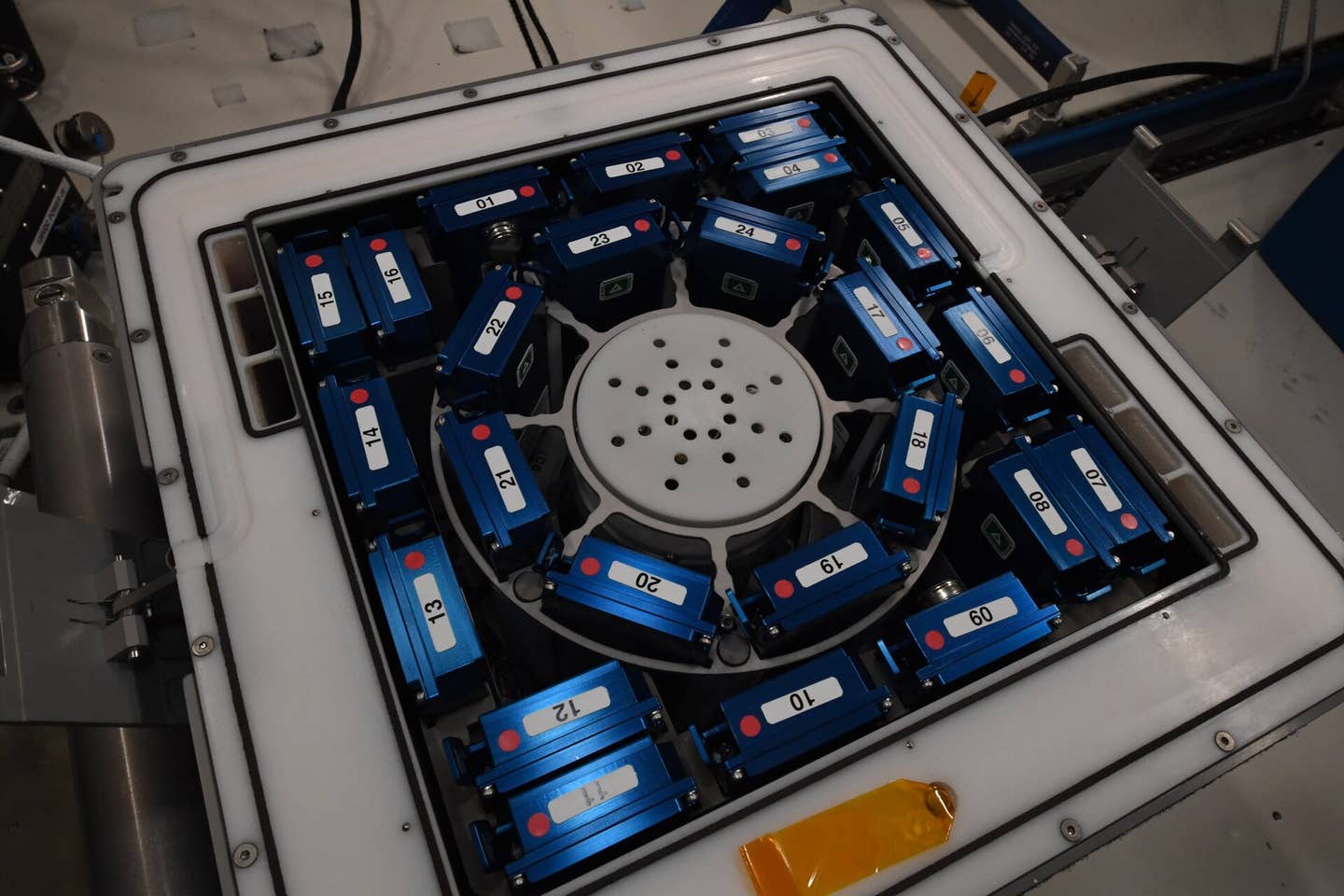Is Europe entering a golden age of astronomy?
Groundbreaking discoveries about gravitational waves, black holes, cosmic rays, neutrinos and other areas may soon become more frequent.

[Dec 10, 2021: Gareth Willmer, Horizon: The EU Research & Innovation Magazine]
Europe’s largest astronomy network brings together around 20 telescopes and telescope arrays. (CREDIT: vchal, Shutterstock)
Groundbreaking discoveries about gravitational waves, black holes, cosmic rays, neutrinos and other areas of cutting-edge astronomy may soon become more frequent due to the convergence of two major communities of astronomers in a fresh project.
Previously, Europe had two major collaborative networks for ground-based astronomy running over the past couple of decades, known as OPTICON and RadioNet. These focused on observing astronomical phenomena in separate wavelength ranges of the electromagnetic spectrum—the former at optical wavelengths, in a portion of the spectrum that includes visible light; and the latter at longer, radio wavelengths.
Now, these two domains of astronomy are uniting in a project called the OPTICON RadioNet Pilot (ORP), a consortium of astronomers from 37 institutions and 15 European countries, plus Australia and South Africa.
Referring to itself as 'Europe's largest astronomy network', the initiative was set up in light of the increasing need for astronomers to have a range of skills in different domains and use complementary techniques to understand phenomena. It also brings together around 20 telescopes and telescope arrays owned by members of the consortium, with the aim of harmonising methods and tools between the two domains, and opening up physical and virtual access to facilities.
'There are some people who are experts in both domains, but these are different communities,' said Dr. Jean-Gabriel Cuby at the French National Centre for Scientific Research (CNRS) and Aix-Marseille University, and coordinator for the ORP project. 'I was trained as an optical astronomer, and other people were trained as radio astronomers. Now, we need also to train wavelength-neutral astronomers.'
He explained that the more you can observe about phenomena at different wavelengths, the more of a picture you can build. 'Multi-wavelength astronomy is about observing across the whole spectral domain to have as much information as possible,' he said. 'The light we receive in optical and radio wavelengths comes from different physical processes; so the more we observe in terms of wavelength coverage, the more we learn about the physical processes.'
Related Stories
Dr. Cuby said the aim is to facilitate and speed up the process of getting telescope time for projects that require different facilities—which can be a long-winded process—making it easier for people to do more ambitious projects that previously required vast management efforts.
The telescope facilities include the likes of LOFAR, a trans-European low-frequency radio telescope network based in the Netherlands, and EVN, a network of radio telescopes located mainly in Europe and Asia, with additional antennas in South Africa and Puerto Rico.
Multi-messenger age
Dr. Cuby elaborated on how the need is growing to foster harmonisation between domains in the current age of so-called multi-messenger astronomy. This involves the observation of various 'messenger' particles—such as gravitational waves, neutrinos and cosmic rays—that can reveal different information about the same sources, potentially giving unprecedented insight into the universe and its origins.
Harmonisation is also key for time-domain astronomy, which explores how astronomical events vary over time. Events now being explored are frequently transient, with many, like fast radio bursts, lasting mere milliseconds. Capturing multiple aspects of them thus requires rapid deployment of telescopes and facilities, which can again be aided by collaboration. 'This time-domain astronomy is going to explode in the coming years,' said Dr. Cuby. 'This is really the golden age of astronomy.'
Professor Gerry Gilmore, a cosmologist at the University of Cambridge who is involved in ORP as scientific coordinator for OPTICON, elaborated further. 'That's the sort of science we now do, where you discover something that's usually highly variable and very often it's transient,' he said. 'It's all over very quickly and you don't get another chance. You want then to be able to bring the whole array of potential capabilities into looking at that particular place in the sky now.'
Previously, said Prof. Gilmore, capturing a transient event relied on a huge amount of luck in looking in the right place at the right time, but ORP provides a chance to 'plan to be lucky' through more targeted efforts between different researchers and opens up the 'discovery space' in astronomy.
'As soon as the technology became available to start looking for shorter and shorter timescale events, hey presto, we discovered they're all there—the universe is full of stuff. And it's the most extreme things that happen fastest.'
Gravitational waves
Much of this multi-messenger and time-domain astronomy is in its infancy, but is being opened up by advances in technologies and new deployments of cutting-edge observatories around the world.
One emerging area that ORP hopes will be spurred by collaboration is that of gravitational waves. First detected in 2015, these are ripples in space-time formed by some of the universe's most cataclysmic events, such as pairs of black holes colliding.
This November, an international team of astronomers announced the detection of a record number of gravitational waves, adding 35 new observations over the course of roughly six months to bring the total to 90 so far. The findings, they believe, will help further our understanding of the evolution of the universe, and topics such as the life and death of stars.
With the related study listing more than 1,600 authors from all corners of the world, and harnessing around 100 ground- and space-based instruments—including visible, infrared and radio telescopes, neutrino and gamma-ray observatories, and X-ray instruments—this reflects the hugely extensive collaboration taking place in modern astronomy.
One of the authors, Dr. Sarp Akcay, a theoretical physicist at University College Dublin in Ireland who is not involved in ORP, said the ORP initiative looks promising for inspiring more rapid discoveries.
'This type of large-scale collaboration will be extremely helpful for gravitational-wave astronomy, and even more so for so-called multi-messenger astronomy,' he said. 'With more telescopes joining a global network, follow-up observations can be made quicker in the future, adding to our knowledge of these events.'
Prof. Gilmore said, meanwhile, that although the main focus of ORP is on inspiring collaboration rather than carrying out specific investigations itself, a test case for the project is combining the search for black holes in the optical and radio wavelengths to find out more about their nature, exactly how common these objects are, and whether theories about them are correct.
And with the Milky Way alone thought to harbour millions of black holes, which are often formed by the death of massive stars, there's a vast amount to find out. 'There's a handful of them that have been observed in very special circumstances,' said Prof. Gilmore. 'So we've seen the tip of the iceberg, but we predict that there are huge numbers of them.'
Long-term view
Though it's early days for ORP, which launched this March, and the exact way it develops is yet to be seen, Dr. Cuby and his team hope that the pilot can later transition into a sustainable long-term project beyond its current scheduled duration until early 2025. The aim is also to enable open access to those around the world, broadening the scope for involvement of previously under-represented researchers and countries.
Prof. Gilmore said, meanwhile, that the separate communities have been increasingly converging in recent years, while the OPTICON and RadioNet projects have already established strong collaborative networks in their individual domains over many years. 'The community has been changing steadily over the last few decades,' he said. 'People have been forming teams and using a range of facilities for a given scientific topic. Multi-wavelength astronomy is the reality of the way we actually do it these days.'
With the ORP project, he said: 'Now, it should be possible for a group of young, enthusiastic scientists just to choose their leader, she writes the proposal, and ping—off the team goes'.
Professor Anton Zensus, scientific coordinator for RadioNet in the ORP project, believes the initiative is a 'crucial step' in furthering the field of astronomy that will allow a much richer picture of the universe.
'Multifrequency use allows us to better understand the secrets of the universe,' he said. 'ORP will allow a fast reaction to unexpected and transient astronomical phenomena in the sky, such as gamma ray bursts. We aim on getting a full image illuminating all aspects of phenomena.'
Dr. Zensus added that bringing the radio and optical communities together to harmonise astronomy is a 'crucial step to make it attractive for users from all astronomical communities' and help open up this area of science to non-specialist users too. 'A multi-messenger approach will deepen our understanding of astronomy phenomena, and at the same time create new questions and approaches,' he said.
The research in this article was funded by the EU. If you liked this article, please consider sharing it on social media.
Note: Materials provided above by Horizon: The EU Research & Innovation Magazine. Content may be edited for style and length.
Like these kind of feel good stories? Get the Brighter Side of News' newsletter.
Tags: #New_Discoveries, #Global_Good_News, #Astronomy, #Space, #Technology, #Astrophysics, #The_Brighter_Side_of_News



